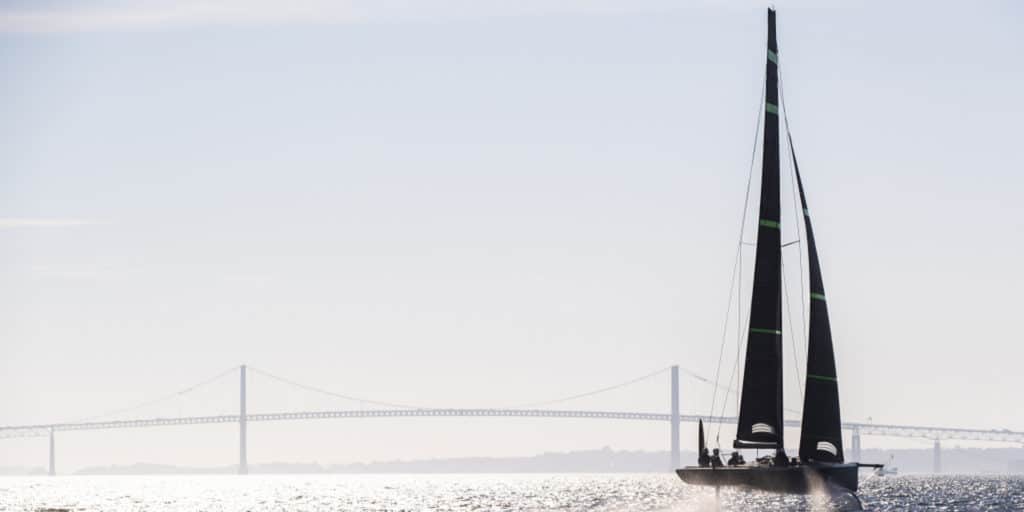
In mid-November the three acknowledged challenging syndicates (with two more promised by the defenders to be revealed as late challengers on the final cut-off day at the end of the month) had taken different steps in their preparatory research.
The British Ineos Team UK, led by Ben Ainslie, were well into foil research using a 28-foot, two-man monohull while, somewhat similarly, American Magic had a near maximum sized (38-foot) monohull with five crew members to test the systems. During this same period, the Challenger of Record, Luna Rossa, was testing the twin-skinned (soft-wing) mainsail on a foiling catamaran, cut down to the maximum size allowable
“The reason to use the catamaran was really because it was a platform that Luna Rossa had, and it was the quickest way to get on the water,” says Jimmy Spithill. “Obviously, the boat (that will be used) is a monohull, but it is a foiling monohull and this catamaran foils so it was, basically, a quick way to get on the water and to get going on trying to start working on this soft – well we all call it a soft wing – but the new concepts of this double mainsail, the concepts which is pretty new to us all.
‘We have sort of come from this, when you think about it, almost ten years of the hard wing, and the hard wing was obviously wonder science, so the systems you could change a little bit on how you trim the hard wing, but it was a one-design hard wing so this was the best and quickest way to basically get on the water and just get going on the new idea.”
Talking with American Magic’s Dean Barker was revealing: “Learning to sail this boat is going to be a real challenge. Already we have seen higher speeds and the boats demand really good control systems and everything else, as much as we had in the catamarans. So, yes, it is going through and trying to develop a lot of those systems. I guess understanding how to sail the boat, like the instincts that we learnt in the catamarans, is going to be transferrable to this boat. There are different characteristics we are seeing already, but for us it is very early days and we have obviously been interested to see how Ben and his guys have been going in their test boat because clearly that was the first of its kind in the water so it there are interesting things to learn just from what we have seen here, but nothing like getting your own boat on the water and learning first hand.”
RELATED: American Magic Lays Foundation of Its America’s Cup Squad
The Defender, Emirates Team New Zealand, doesn’t plan to have a trial boat of any form on the water and is containing its researches for AC36 to the computer. Grant Dalton explains that this is what they did for the last Cup and no one can deny the efficacy of that program so they’re sticking to what worked last time.
In Portsmouth, the Ineos Team UK recruited Nick Holroyd to its design group early on. Holroyd was with ETNZ last time and his success there was outstanding. He suggests that: “there is a process that I think I know and understand in designing boats. I think the culture of how the sailing team members are involved and that development process, and kind of I thing you have to have a stomach for and take a view on the kind of risk, and the reward and the process. Getting that process happening in the right way and hopefully the results will look after themselves at that point.
“The process last time was actually looking at how the boat was going to be sailed. It’s the same this time. Where is the power to come from, what are the mechanics and how to do it, and the conclusion of that study is a very different way of sailing the boat. One of the things to be careful with here is to not fall into the trap of fighting yesterday’s war. The power consumption, and the mechanics of the catamaran are one thing, and this boat will be different. So we need to look at this class rule very carefully.
“We have moved away from the design team being naval architects, structures and mechanical engineers. That was pretty much the design team in the Version 5 days. Now, the whole process is control systems, electronics and high-end hydraulics. Well away from the accepted principles of Naval Architects.”









